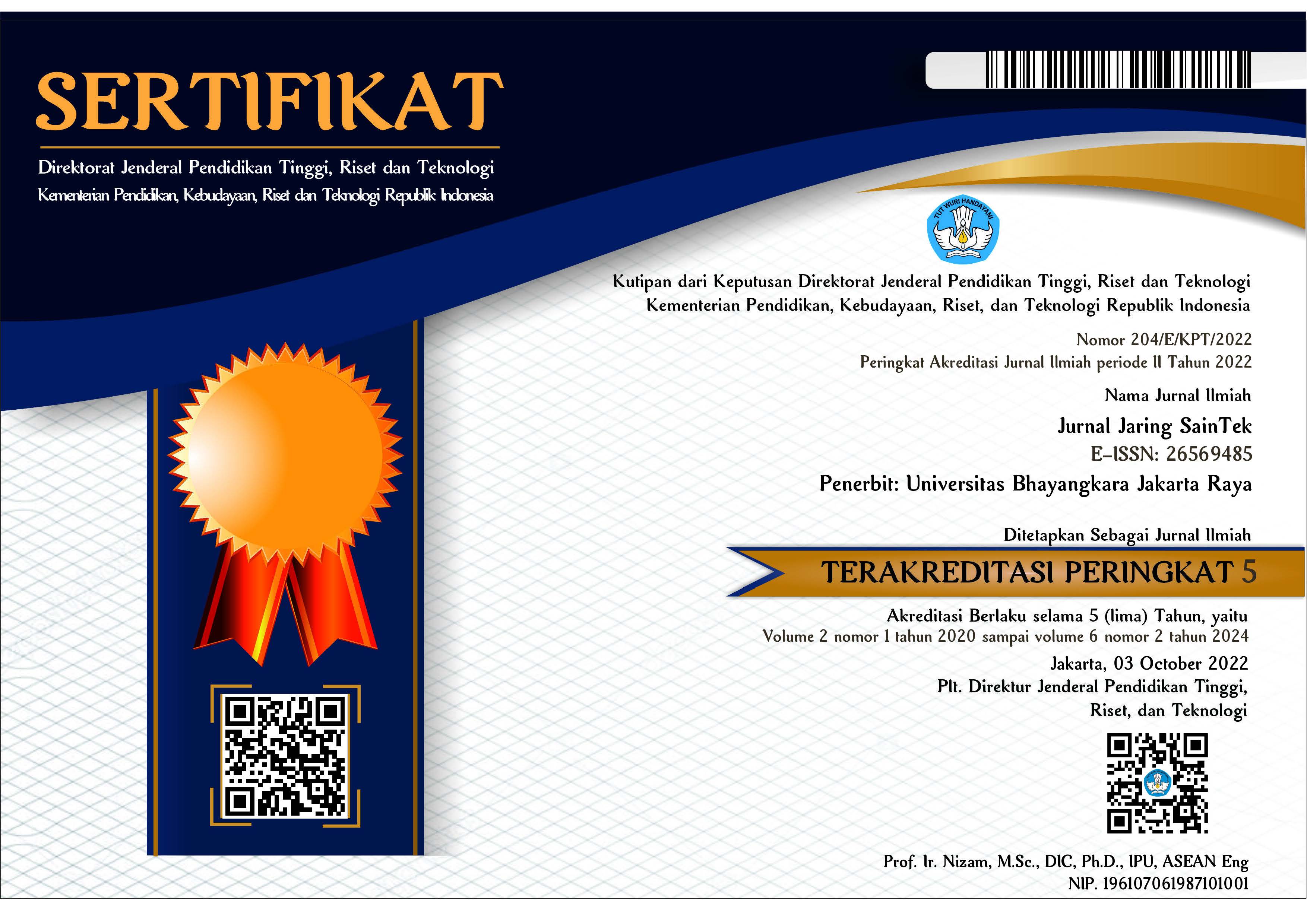Potensi Pemanfaatan Ulang Sampah Plastik Menjadi Eco-Paving Block
DOI:
https://doi.org/10.31599/jaring-saintek.v3i1.478Keywords:
Eco-paving, plastic, smelter, utilization, wastesAbstract
Eco-paving block is a product used for construction consisting of sand and plastic mixes. In order to produce eco-paving blocks, the mixture of sand and concrete was substituted in part with sand and plastics. In order to properly mix plastics to create eco-paving blocks, a plastic smelter was used to generate heat and melt the plastic materials. The plastic material types used in this case was PETE or PETE, which has the characteristics of being flexible and high adhesive properties; along with ABS which can stand pressures. Based on the tests conducted with the plastic smelter using PET, ABS, and the combination of PET and ABS, the most promising result was shown with the combination of PET and ABS. This combination required 8 minutes 21 seconds for the plastics to become fully melted, and a temperature of 278oC. The combination of PET and ABS resulted in a mixture of plastics with strong adhesive properties and durability. This product could potentially be developed into eco-paving blocks. Additional studies regarding the optimum dosage combinations of PET and ABS plastics in eco-paving blocks can potentially be established in order to further optimize the usage of these plastics in eco-paving blocks.
Downloads
References
[2] Badan Pusat Statistik. (2018). Statistik Lingkungan Hidup Indonesia 2018. Publikasi Badan Pusat Statistik.
[3] Baqiroh, Nur Faizah Al Bahriyatul. (2019). Timbulan Sampah Nasional Capai 64 Juta Ton per Tahun. (Online) https://ekonomi.bisnis.com/read/20190221/99/891611/timbulan-sampah-nasional-capai-64-juta-ton-per-tahun Diakses 3 Agustus 2020.
[4] Damanhuri, Enri dan Tri Padmi. 2010. Diktat Kuliah Pengelolaan Sampah. Bandung: Teknik Lingkungan Institut Teknologi Bandung.
[5] Direktorat Jenderal Pengelolaan Sampah, Limbah, dan B3. (2019). Data Pengelolaan Sampah: Data Umum. (Online) http://sipsn.menlhk.go.id/?q=3a-data-umum&field_f_wilayah_tid=1426&field_kat_kota_tid=All&field_periode_id_tid=2168 Diakses 8 Agustus 2020.
[6] Enda, D., Sastra, M., Lizar, Zulkarnain, Rahman, B. (2019). Penggunaan Plastik Tipe Pet Sebagai Pengganti Semen Pada Pembuatan Paving Block. JURNAL INOVTEK POLBENG, VOL. 9, NO. 2, NOVEMBER 2019 (214-218) doi: 10.35314/ip.v9i2.1010.
[7] Hidayat, Y. A., Kiranamahsa, S., dan M. A. Zamal. (2019). “A study of plastic waste management effectiveness in Indonesia industries,” AIMS Energy, vol. 7, no. 3, pp. 350–370, 2019, doi: 10.3934/ENERGY.2019.3.350.
[8] Kholidah, N., Faizal, M. and M. Said. (2018). “Polystyrene Plastic Waste Conversion into Liquid Fuel with Catalytic Cracking Process Using Al2O3 as Catalyst,” Sci. Technol. Indones., vol. 3, no. 1, pp. 1–6, 2018, doi: 10.26554/sti.2018.3.1.1-6.
[9] Masrida, Reni. (2017). Kajian Timbulan dan Komposisi Sampah Sebagai Dasar Pengelolaan Sampah di Kampus II Universitas Bhayangkara Jakarta Raya. Journal of Env. Engineering & Waste Management, Vol. 2, No. 2, 69-78.
[10] Mawardi, Indra dan Hasan Lubis. (2019). Proses Manufaktur Plastik dan Komposit: Edisi Revisi. Yogyakarta: Penerbit ANDI.
[11] Mousavi, S. M., Hashemi, S. A., Amani, A. M., Saed, H., Jahandideh, S. & Mojoudi, F. (2017). Polyethylene terephthalate/acryl butadiene styrene copolymer incorporated with oak shell, potassium sorbate and egg shell nanoparticles for food packaging applications: Control of bacteria growth, physical and mechanical properties. Polymers from Renewable Resources, October 2017 (177-196). doi: 10.1177/204124791700800403.
[12] Nkwachukwu, O., Chima, C., Ikenna, A., and L. Albert. (2013). “Focus on potential environmental issues on plastic world towards a sustainable plastic recycling in developing countries,” Int. J. Ind. Chem., vol. 4, no. 1, p. 34, 2013, doi: 10.1186/2228-5547-4-34.
[13] Prisandani, Ulya Yasmine dan Amanda, Adzhana Luthfia. (2020). The Importance of Regulating Plastic Marine Pollution for the Protection of Indonesian Marine Environment. Jurnal Yuridika: Volume 35 No 1, January 2020 (171-185), doi: 10.20473/ydk.v35i1.10962
[14] Putri, Anissa & Fujimori, Takashi & Takaoka, Masaki. (2018). Plastic waste management in Jakarta, Indonesia: evaluation of material flow and recycling scheme. Journal of Material Cycles and Waste Management 20(6). doi: 10.1007/s10163-018-0753-2.








